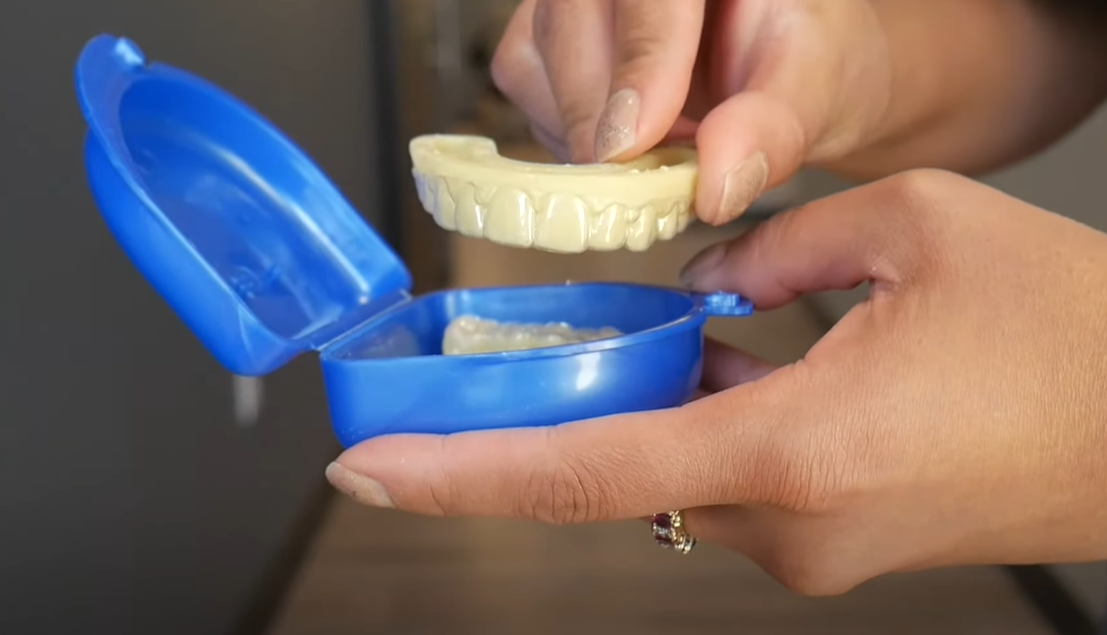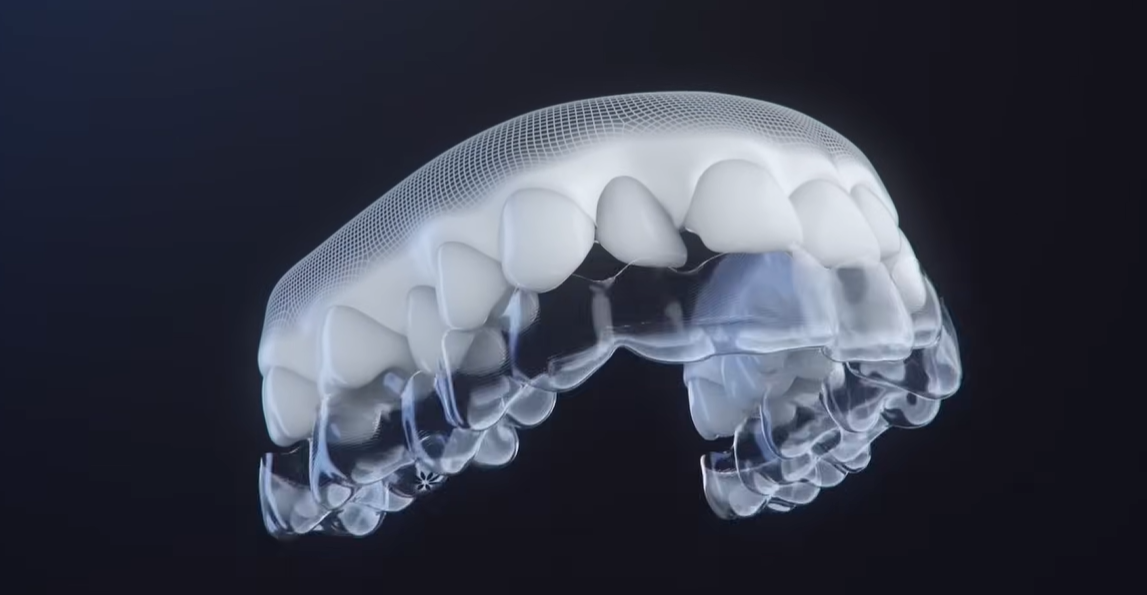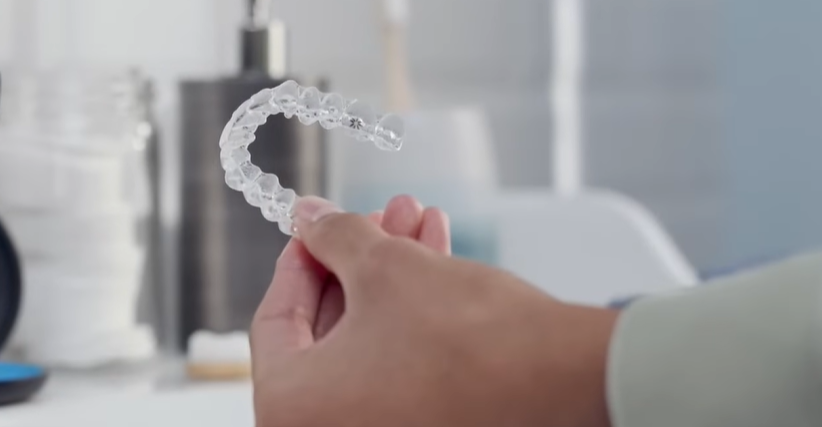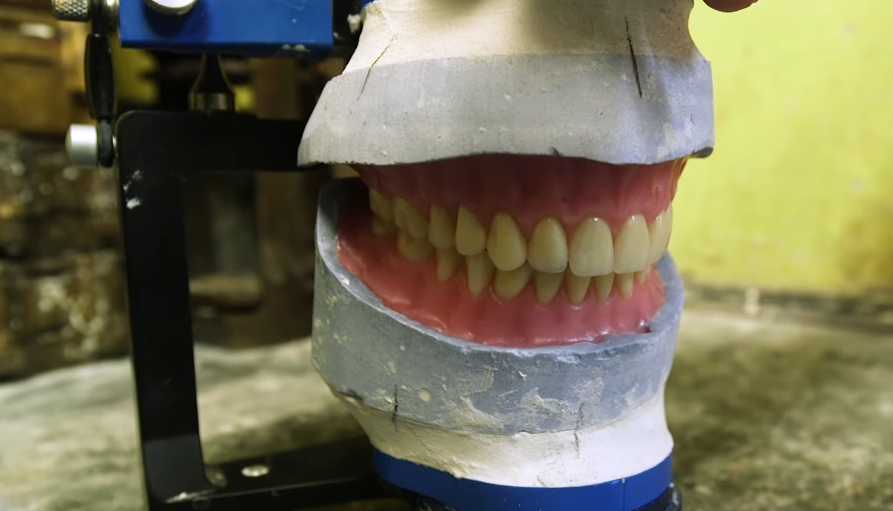If you buy through links on our site, we may earn a small affiliate commission to help support the blog - at no extra cost to you. It never influences our product selection process. Thank you!
Are you confused about orthodontic records and why they’re so crucial for your treatment plan? These comprehensive diagnostic tools are the foundation for creating your personalized path to a perfect smile.
Orthodontic records typically include photographs, X-rays, and dental impressions that provide your orthodontist with essential information about your teeth, jaw, and facial structure. When you’re considering braces or aligners, these records help determine the most effective treatment approach for your exact needs. They serve as both a starting point to measure progress and a legal document tracking your orthodontic journey.
What Are Orthodontic Records and Why Are They Important
Orthodontic records are comprehensive collections of diagnostic information that provide a complete picture of your dental and facial structures. These records typically include photographs, X-rays, digital scans or impressions, and detailed clinical examinations that capture the current state of your teeth, jaw, and facial profile.
Types of Orthodontic Records
Digital and clinical photographs document your facial appearance, smile, and teeth from various angles. X-rays, including panoramic and cephalometric radiographs, reveal the positions of teeth roots, jaw relationships, and potential hidden dental issues. 3D scans or physical impressions create precise models of your dental arches, showing how your teeth fit together.
Dr. Todd B. Harris often shares the story of a patient who initially questioned the need for comprehensive records: “She couldn’t understand why we needed so many images and scans until I showed her how a slight asymmetry in her jaw—only visible on the cephalometric X-ray—would significantly impact her treatment approach. Those records helped us develop a customized plan that addressed the underlying issue, not just the visible crowding.”
The Importance of Accurate Records
Accurate orthodontic records serve as the foundation for successful treatment planning. They enable your orthodontist to diagnose conditions that aren’t visible during a simple oral examination, including impacted teeth, bone abnormalities, and growth patterns that affect jaw relationships.
These detailed records also establish a baseline for measuring treatment progress. Your orthodontist compares current conditions to initial records throughout your treatment journey, making adjustments when necessary to achieve optimal results.
Plus to clinical benefits, orthodontic records function as essential legal documentation. They provide verification of your pre-treatment condition, document the care you’ve received, and support insurance claims for coverage of exact orthodontic procedures.
Types of Orthodontic Records

Orthodontic records are comprehensive collections of patient data that serve as the foundation for diagnosis, treatment planning, and monitoring of dental and skeletal conditions. These critical documents help orthodontists like Dr. Todd B. Harris develop customized treatment plans customized to your unique needs.
Diagnostic Photographs
Diagnostic photographs provide visual documentation of your teeth, mouth, and facial structure before, during, and after treatment. Intraoral photographs capture detailed views of your teeth alignment, occlusion patterns, and overall oral health from inside your mouth. Extraoral photographs document your facial profile and structure, allowing orthodontists to assess facial aesthetics and the relationship between skeletal features. Dr. Harris often points out that “photographs tell a story that words alone cannot convey, revealing subtle asymmetries or aesthetic concerns that patients themselves may not have noticed.”
Dental Impressions and Models
Dental impressions create accurate replicas of your teeth and gums, essential for analyzing your bite and planning treatment. These impressions can be traditional physical molds or modern digital scans of your dental arches. Diagnostic casts created from these impressions allow orthodontists to study tooth arrangement, occlusion, and bite issues in detail without you being present. One patient of Dr. Harris remarked, “I was amazed to see my teeth from angles I’d never seen before when my orthodontist showed me the 3D models created from my digital impressions.”
Radiographic Records
Radiographic records provide crucial information about structures not visible during a clinical examination. Panoramic X-rays show your entire dental arch and jaw structure in a single comprehensive image. Cephalometric X-rays offer side views of your skull and jaws for detailed analysis of skeletal relationships and growth patterns. Digital radiographs have revolutionized orthodontic practice by allowing images to be stored and processed electronically for enhanced precision and convenience. Dr. Harris frequently emphasizes that “proper radiographic assessment can reveal hidden issues like impacted teeth or bone abnormalities that dramatically influence treatment approaches.”
Clinical Examination Data
Clinical examination data forms the personal component of your orthodontic records. Your medical and dental history includes vital information about overall health, allergies, medications, and previous dental treatments that might affect orthodontic care. The hands-on clinical examination involves careful assessment of your teeth, mouth, and jaw for alignment, spacing, and functional concerns. Dr. Harris recalls a case where “a thorough clinical examination revealed signs of nighttime teeth grinding that wasn’t mentioned in the patient’s history but significantly impacted our treatment strategy.” This combination of subjective and objective findings creates a complete picture of your oral health status.
The Digital Revolution in Orthodontic Record-Keeping
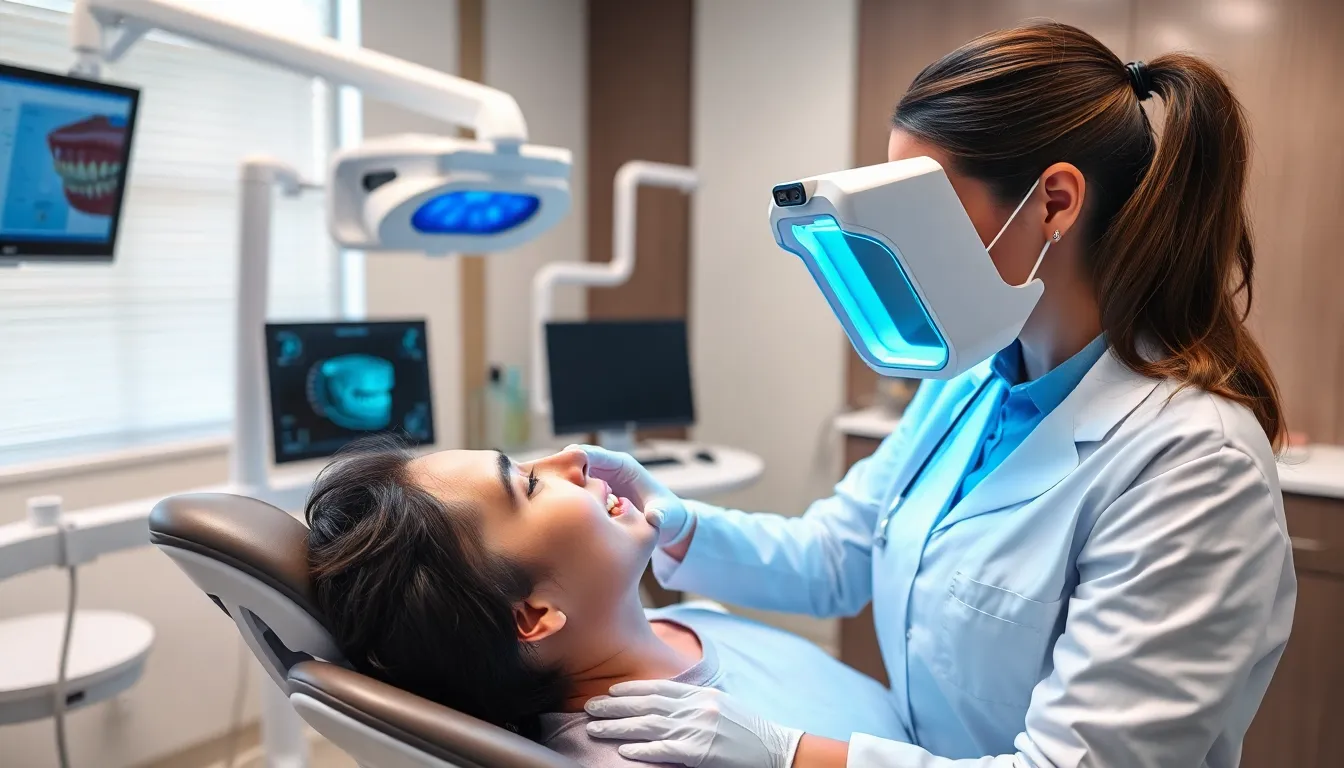
The orthodontic field has embraced digital technology, transforming traditional record-keeping into an efficient, precise digital process. Digital records enable seamless sharing of treatment data between providers while offering improved accuracy and accessibility for long-term patient monitoring.
3D Scanning Technology
3D intraoral scanners have replaced uncomfortable traditional impressions, capturing high-resolution digital models of your teeth and oral structures. These scanners create photorealistic 3D representations that orthodontists use to identify misalignments and bite issues with exceptional precision. Your treatment becomes more customized as clinicians can simulate tooth movements over time, visualizing the entire treatment process before it begins. Recent advances in scanner technology provide larger fields of view and integrate intraoral photographs with 3D scans for comprehensive visualization. AI technology now merges extraoral photographs with intraoral scans to simulate treatment outcomes, showing you realistic before-and-after smile videos of your expected results.
Dr. Harris notes, “3D scanning has revolutionized how we communicate treatment plans with patients. Seeing a simulation of their future smile dramatically improves understanding and motivation. Patients love visualizing their end results before we even start treatment.”
Digital Radiography Advancements
Digital radiography, particularly Cone Beam Computed Tomography (CBCT), offers unprecedented insights into your orthodontic treatment planning. CBCT images integrate with treatment planning software to provide three-dimensional visualizations of tooth roots and surrounding bone structures during movement simulations. This technology creates a biological map of healthy bone boundaries, improving treatment planning accuracy and safety for complex cases. The combination of CBCT data with 3D photographic and intraoral scan information delivers rich diagnostic capabilities that weren’t possible with traditional records.
How Orthodontic Records Guide Treatment Planning

Orthodontic records serve as the foundation for creating effective, personalized treatment plans for patients seeking orthodontic care. These comprehensive records capture detailed information about your oral health, including tooth position, jaw alignment, facial structure, and relevant medical history such as allergies or medication contraindications. With this data, orthodontists create customized treatment strategies designed specifically for your unique dental situation.
Case Analysis and Diagnosis
Accurate diagnosis forms the cornerstone of successful orthodontic treatment, with orthodontic records providing the essential data needed for thorough case analysis. Your records offer clear images and measurements of teeth, gums, jawbone, and their spatial relationships, allowing orthodontists to confirm exact conditions requiring intervention. Advanced imaging techniques document existing oral conditions, verify treatment necessities, and predict growth patterns—particularly important for younger patients whose facial structures are still developing.
Dr. Todd B. Harris explains, “When examining a patient’s records, we’re looking beyond just crooked teeth. The comprehensive data reveals underlying skeletal relationships, growth patterns, and potential complications that might not be visible during a standard clinical examination. This depth of information prevents misdiagnosis and enables us to intervene at the optimal time.”
The detailed analysis of orthodontic records helps identify potential issues before they become irreversible problems. For example, records can reveal how wisdom teeth might affect treatment outcomes or detect jaw development issues that require early intervention. This thorough diagnostic approach ensures treatment addresses the root causes of orthodontic problems rather than just their visible symptoms.
Treatment Simulation and Prediction
Orthodontic records enable powerful treatment simulations that visualize potential outcomes before treatment even begins. Your facial growth patterns and dental changes tracked over time provide orthodontists with critical information for predicting how your bite and jaw will develop throughout treatment. These predictive capabilities allow for testing various treatment scenarios virtually to determine the most effective approach for your exact case.
“The ability to simulate treatment outcomes transforms how we communicate with patients,” notes Dr. Harris. “When patients see a visual representation of their potential future smile, they become more engaged in the treatment process and develop realistic expectations about results.”
Regular monitoring through updated records ensures your treatment stays on track or gets modified if needed. Orthodontists compare current records with baseline measurements to evaluate progress, making adjustments to achieve optimal results. This systematic approach to tracking treatment efficacy improves overall outcomes by allowing for timely interventions when progress deviates from the expected path.
Treatment simulation also helps in selecting the most appropriate orthodontic appliances for your case. Whether traditional braces, clear aligners, or other specialized devices are needed, the detailed measurements from your records guide these decisions. The precision offered by comprehensive orthodontic records ensures your treatment plan remains adaptable throughout your orthodontic journey, accommodating changes such as facial growth or unexpected tooth movement patterns.
Legal and Ethical Considerations of Orthodontic Records

Orthodontic records involve complex legal and ethical responsibilities that every practice must navigate carefully. Understanding these considerations helps protect both patients and practitioners throughout the treatment journey.
Ownership and Access to Orthodontic Records
Physical orthodontic records legally belong to the dentist or orthodontist who serves as their custodian. You have the legal right to access, review, and request copies of your records, even if your account has an outstanding balance. Practitioners can charge reasonable fees for copying and mailing these documents, but they’re obligated to provide them regardless of payment status. Dr. Todd B. Harris often advises colleagues to consider waiving copying fees in situations involving adverse incidents, as this approach builds goodwill and may prevent unnecessary legal complications. Your orthodontist maintains ownership of original records, but your right to access copies of your information remains protected under healthcare regulations.
Patient Privacy and HIPAA Compliance
HIPAA regulations strictly govern how orthodontic records are handled, stored, and shared. Your protected health information receives important safeguards under these federal laws, requiring orthodontic practices to carry out secure storage systems and limit access to authorized personnel only. Orthodontists must obtain your explicit consent before sharing records beyond treatment purposes with other providers or entities. HIPAA permits practices to charge only cost-based fees for providing record copies and maintains these requirements regardless of your payment status. Digital records systems have enhanced privacy protections through encryption and access controls, creating additional security layers for your sensitive information. Dr. Harris emphasizes to patients that their privacy remains a top priority in his practice, implementing regular staff training on HIPAA compliance protocols.
Record Retention Requirements
Orthodontic records must be maintained in excellent condition for periods ranging from 4 to 10 years after treatment completion, depending on your state’s regulations. Proper filing systems ensure these records remain accessible when needed for follow-up care or legal purposes. Your records cannot be used for publication or research without your explicit written consent – this protection extends to all photos, scans, and radiographs taken during your treatment. Orthodontists seeking additional images specifically for research purposes must obtain separate consent forms and cannot take such records solely for research without your approval. Digital record storage has simplified the retention process while improving accessibility for both practitioners and patients. Dr. Harris notes, “Maintaining comprehensive records beyond the minimum required period has saved many practitioners from potential litigation, especially in cases where patients return years later with questions about their previous treatment.”
The Future of Orthodontic Records

Orthodontic records are rapidly evolving beyond traditional documentation methods, driven by cutting-edge digital technologies that transform every aspect of patient care. Digital impressions created with intraoral scanners now produce high-resolution 3D models that are more comfortable for patients while enabling precise treatment planning. These digital records support better-fitting customized appliances like braces and aligners with improved predictability.
3D printing technology has revolutionized how orthodontic practices produce customized appliances in-house. Orthodontists can now fabricate appliances directly from digital records, significantly reducing production time and costs while improving accuracy and patient comfort. Dr. Todd B. Harris notes, “My patients are amazed at how quickly we can create custom appliances using our in-office 3D printer. One teenage patient recently commented that receiving her custom retainer in a single visit rather than waiting weeks made a tremendous difference in her busy schedule.”
Artificial intelligence and machine learning algorithms analyze vast datasets from previous cases to predict treatment outcomes with remarkable accuracy. AI-driven records enable highly personalized treatment paths by optimizing tooth movement sequences and potentially reducing overall treatment duration. These smart systems continuously learn from new data, making treatment planning increasingly sophisticated and effective.
Virtual consultations and remote monitoring tools have expanded access to orthodontic care by allowing tracking of treatment progress without frequent office visits. Patients can now share digital images of their treatment progress from home, receiving real-time feedback and adjustments to their treatment plans. This teledentistry approach provides convenience while maintaining high-quality care through comprehensive digital record-keeping systems.
Treatment simulation capabilities represent another important advancement in digital orthodontic records. Modern software creates visual representations of expected treatment outcomes before procedures begin, helping patients understand and visualize their future smile. These simulations enhance patient engagement and improve the informed consent process by setting realistic expectations from the outset.
The integration of 3D imaging, AI, 3D printing, and teledentistry points to a future where orthodontic records become increasingly ever-changing and interactive. Comprehensive digital workflows promote more precise diagnostics, faster appliance fabrication, and highly personalized treatment planning. For orthodontic practices and patients alike, these technological advancements translate to more efficient, accessible, and effective orthodontic care with improved outcomes.
Conclusion
Orthodontic records are the foundation of successful treatment planning for your perfect smile. These comprehensive tools give your orthodontist crucial insights into your unique dental situation that aren’t visible during a standard examination.
With digital advancements transforming traditional methods into faster and more precise processes your orthodontic experience continues to improve. From 3D scanning replacing uncomfortable impressions to AI-powered treatment predictions modern technology makes your treatment more comfortable and effective.
Your orthodontic records not only guide your current treatment but serve as valuable documentation throughout your orthodontic journey. They ensure you receive personalized care customized specifically to your needs while protecting both you and your provider legally.
Trust in these essential tools as you work with your orthodontist to achieve the healthy beautiful smile you deserve.
Frequently Asked Questions
What are orthodontic records and why are they important?
Orthodontic records are comprehensive collections of diagnostic information including photographs, X-rays, and dental impressions that capture a patient’s dental and facial structures. They’re essential for developing personalized treatment plans, measuring progress throughout treatment, and serving as legal documentation. These records help orthodontists identify conditions not visible during regular examinations and create effective strategies tailored to each patient’s unique needs.
What types of orthodontic records do orthodontists collect?
Orthodontists typically collect several types of records: digital and clinical photographs of teeth and facial structures, X-rays (panoramic and cephalometric radiographs), 3D scans or physical impressions of teeth, and clinical examination data including medical history. Each type provides specific information that contributes to a complete understanding of a patient’s orthodontic needs and helps guide appropriate treatment planning.
How has technology changed orthodontic record-keeping?
Digital technology has revolutionized orthodontic record-keeping by replacing traditional methods with more efficient and precise digital processes. Advancements include 3D scanning technology that has eliminated uncomfortable physical impressions, digital radiography like CBCT for detailed imaging, and digital record storage systems. These innovations facilitate seamless sharing of treatment data, enhance accuracy for long-term monitoring, and improve overall patient experience.
Can I access my orthodontic records?
Yes, patients have the legal right to access their orthodontic records. These records belong to both the orthodontist (who created them) and the patient (whose information they contain). You can request copies of your records at any time, though your orthodontist may charge a reasonable fee for duplication. Access to your records is important for continuing care with another provider or addressing any legal concerns.
How do orthodontic records guide treatment planning?
Orthodontic records serve as the foundation for creating effective treatment strategies by providing detailed information about a patient’s teeth, jaw, and facial structure. They enable accurate diagnosis of conditions requiring intervention, help predict growth patterns, and allow orthodontists to visualize potential treatment outcomes. With comprehensive records, orthodontists can prevent misdiagnosis, create personalized treatment plans, and implement timely interventions.
What does the future of orthodontic records look like?
The future of orthodontic records is increasingly digital and interactive. Innovations include high-resolution 3D models from intraoral scanners, in-house fabrication of appliances using 3D printing, AI-powered analysis for predicting treatment outcomes, virtual consultations, and remote monitoring tools. Treatment simulation capabilities will help patients visualize expected results. These advancements point toward more efficient, accessible orthodontic care with improved outcomes.
How long are orthodontic records kept?
Orthodontic records are typically kept for 7-10 years, though requirements vary by state and country. Many orthodontists maintain records longer, especially for younger patients. Digital storage has made long-term record keeping more feasible. These records remain valuable for future reference if additional treatment is needed or for legal documentation. Patients should ask about their provider’s specific record retention policies.
How do 3D scans improve the orthodontic treatment process?
3D scans create highly accurate digital models of teeth without the discomfort of traditional impressions. These scans allow orthodontists to examine teeth from all angles, measure with precision, and plan treatment with greater detail. They facilitate the creation of custom appliances, enable virtual treatment simulations, and make it easier to track progress. 3D scanning technology improves both diagnosis accuracy and overall patient comfort.

